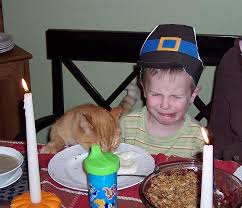 Years ago, I sent the first pages of my second novel to a semi-famous novelist acquaintance for advice. She wrote back that those pages contained something like forty-four back story references. She kindly suggested I revise. I’d become stuck in the Back Story Swamp.
Years ago, I sent the first pages of my second novel to a semi-famous novelist acquaintance for advice. She wrote back that those pages contained something like forty-four back story references. She kindly suggested I revise. I’d become stuck in the Back Story Swamp.
Writing Tip for Today: Back Story or Flashback, is one of the most troublesome areas for novelists, myself included. Here’s what I’ve learned so far:
When and Where
Most writers understand that setting or the “where” of a scene or story is a vital component. Readers don’t usually want to float in nowheresville. In fact, setting can function as a character, metaphorically or literally. But what about the “when?” Readers need to know how one event relates in time to another—things which happen will influence later events. A character isn’t the same today as she was yesterday. A flash back or back story is the usual vehicle for informing readers of a character’s past. Although some writers are told that back story is the enemy, especially in an opening, flashbacks do serve a useful purpose. Back story helps orient readers in time. Used wisely, back story helps build a coherent timeline that lends context to any story.
Avoid Cold Mashed Potatoes!
The key, of course, is used wisely. It’s perfectly acceptable to write out a character’s life story in order for the writer to fully comprehend that character’s motivation. Go ahead and fill a journal or character sketch with your character’s personality traits, why she’s filled with unresolved anger, how she came to be so determined to obtain the goal you have given her. Even go so far as to write lots of back story into your drafts. Whatever helps you understand your character more fully will help create a more three-dimensional person. Just don’t think that all these flashbacks are necessary to the story readers will see. When you revise, think like a spy—readers need only absolutely critical information in any one scene. Including Back Story on a Need to Know Basis will help limit the amount of it you place in any scene. The idea behind Cold Mashed Potatoes is that while a piece of back story takes the reader out of a real-time scene, the real-time freezes for the reader. It doesn’t take long for readers to forget all about the real-time scene, so limiting the flashback to the shortest period possible should help keep them in the NOW. And keep the mashies from getting cold. Review the Cold Mashed Potatoes rule HERE.
Write Better Characters
You may have heard the adage, “Character is Story and Story is Character.” A three-dimensional or well-rounded character is a character readers can relate to, sympathize with and follow. A major tool for creating this unforgettable character is knowing your character’s motivation. Readers sympathize and emotionalize (is that a word?) more easily with a character if they know the character’s motivation for acting. Writers must establish past events in order to make a case for a character’s motivation, growth and development. Yet if the writer begins a story with forty-five back story references as I did, readers will wonder why the story didn’t start earlier. The wise use of flashback is an excellent way to make a character come to life. By understanding his past, readers know why he feels the way he does, what he’s liable to do or not do and how he should react to the challenges before him. I’ve found that a great way to accomplish this without getting stranded in the Cold Mashed Potatoes or confusing readers is to weave small beats (sentences) of back story around and through the action. Use concrete sensory detail to help the flashback be as real as the scene is. Instead of a separate “Her mind reeled back” section, try allowing the character’s attitudes, biases and quirks come through a few well-placed sentences of back story. And don’t forget the “had” for the first back story sentence as well as the last. Here’s an example: They walked three abreast, Faye in the middle, with her hand tucked in the curve of Estel’s bony elbow. Their ease reminded Thad of the days he and Sadie had walked together, but he pushed the remembrances away. No sense in spoiling a good day. The example uses sight as a vehicle to back story, and his self-admonishment not to spoil a good day gives insight into his character. Limit these “beats” to three in any one exchange and you won’t risk stalling your story in the Back Story swamp.





Time sequence can easily confuse readers and mar a story, but your suggestions will help writers keep the action going in the right direction. Thanks, Linda.
As always Mary,
I appreciate your comments.
Keep Writing,
Linda
This is very informative. Thanks for sharing.
Sharon,
So glad you found the tips useful!
Keep Writing!
Linda